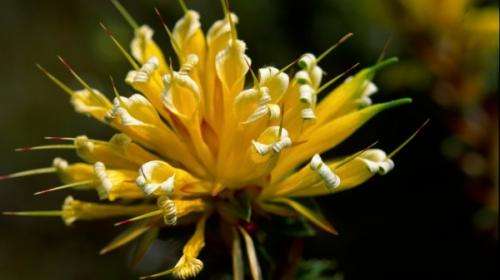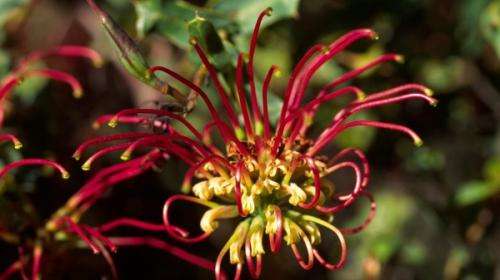South West Australian plant community on the critical list

Scientists have classified a small, geographically-restricted ecosystem in the South West as critically endangered, according to a newly-adopted international benchmarking system.
WA Department of Parks and Wildlife ecologist Valerie English says the Busselton Ironstone Community occupies two small areas on the edge of the Swan Coastal Plain near Tutunup and Carbunup River, east of Busselton.
"It contains a whole suite of endemic species that don't occur anywhere else on earth...they are dependent on that particular habitat for their very survival," she says.
Ms English, who is principal ecologist for Species and Communities at DPaW, says the assessment is one of several being made, Australia-wide, on ecosystems with a high level of endemism.
Each assessment is a test of the new "Ecosystems Red List", a set of criteria the International Union for Conservation of Nature (IUCN) recently adopted for ranking the threat level to ecosystems.
"They're testing those criteria across the globe and this is one example of testing that ranking system on a West Australian example," she says.
The Busselton Ironstone Community was one of two communities chosen in WA.
Ms English and co-author David Keith reviewed existing datasets and studies, applying four Red List criteria to assess the ecosystem.
These criteria are: rates of decline in ecosystem distribution, restricted distributions with continuing decline or threats, rates of environmental (abiotic) degradation, and rates of disruption to biotic processes known colloquially as "aggravating factors".

She lists hydrological issues and fire as factors disrupting biotic processes, but she says little herbaceous weeds are the biggest problem.
The weeds are difficult to control, as they require herbicide to be manually applied.
Watsonia is also a significant threat, but can be controlled in a similar labour-intensive manner.
She says several conservation measures are already in place for the community.
These include annual weed and rabbit control programs, aerial spraying for dieback (Phytophthora cinnamomi), seed collection to preserve genetic material, and translocations.
"Some of the rare flora in the community are being translocated into areas of the habitat that have been previously cleared," she says.
"We're planting areas of those rare flora as well as the associated species that occur in the community."
She says the study follows a 2013 meeting she attended in Queensland, where she learned to use Red List criteria for ecological analysis.
It will comprise one chapter in a volume of the periodical Austral Ecology, devoted to similar assessments from various parts of Australia.
More information: "Assessing risks to ecosystems within biodiversity hotspots: a case study from southwestern Australia." Austral Ecology DOI: 10.1111/aec.12177
Provided by Science Network WA


















